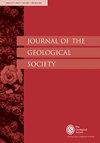Debris-slides, olistoliths and turbidites: keys to understanding the tectonostratigraphic affinities of a terrane block in a young orogenic belt, Timor-Leste
IF 3
3区 地球科学
Q2 GEOSCIENCES, MULTIDISCIPLINARY
引用次数: 0
Abstract
Timor lies at the centre of a rapidly evolving orogenic belt. Matebian Range, one of its largest mountains, was previously mapped as Lower Miocene neritic Cablac Limestone and regarded as allochthonous (viz. Banda Terrane). New analyses have demonstrated a disjunct stratigraphy, extending from the Lower Jurassic to lowest Miocene and encompassing neritic to abyssal strata. Positioning each stratigraphic unit (six new) on a time vs. bathymetry plot and identifying clast types in conglomerates and turbidites allows reconstruction of changes in provenance to depo-centres through time. Terrane progression from the northern margin of Gondwana to the southern Sundaland margin (Asia) and then back to the northwest margin of the Australian continent is indicated involving progressive amalgamation and rifting and substantial episodes of uplift, particularly during the Middle Eocene and the Late Oligocene. The youngest unit (Late Oligocene–earliest Miocene) was deposited adjacent a rapidly rising hinterland (southern Sundaland) very different from that on the coeval Australian margin. The study provides a model for the tectonostratigraphic reconstruction of limestone-dominated mountains in young orogenic belts and demonstrates the importance of using sedimentary clasts in mass-flow deposits to interpret ages and depositional environments of reworked material and to stitch together tectonostratigraphic pathways through time. Supplementary material: https://doi.org/10.6084/m9.figshare.c.6852387碎屑滑块、橄榄岩和浊积岩:了解东帝汶年轻造山带地块构造-地层亲缘关系的关键
东帝汶位于一个快速演化的造山带的中心。Matebian山脉是其最大的山脉之一,以前被绘制为中新世下浅海系Cablac石灰岩,并被认为是外来的(即班达地)。新的分析已经证明了一个分离的地层,从下侏罗纪延伸到中新世最低,包括浅海到深海地层。将每个地层单元(6个新单元)定位在一个时间测深图上,并确定砾岩和浊积岩中的碎屑类型,可以重建物源到沉积中心随时间的变化。从冈瓦纳北缘到南巽他兰边缘(亚洲),再回到澳大利亚大陆西北边缘的地体演化过程,包括渐进性的合并和裂陷,以及大量的隆升,特别是在中始新世和晚渐新世。最年轻的单元(晚渐新世-中新世早期)沉积在一个快速上升的腹地(南巽他兰)附近,与同时期的澳大利亚边缘非常不同。该研究为年轻造山带以灰岩为主的山脉的构造地层重建提供了一个模型,并证明了利用质量流沉积中的沉积碎屑来解释改造物质的年龄和沉积环境,以及在时间上拼接构造地层路径的重要性。补充资料:https://doi.org/10.6084/m9.figshare.c.6852387
本文章由计算机程序翻译,如有差异,请以英文原文为准。
求助全文
约1分钟内获得全文
求助全文
来源期刊

Journal of the Geological Society
地学-地球科学综合
CiteScore
6.00
自引率
3.70%
发文量
68
审稿时长
6-12 weeks
期刊介绍:
Journal of the Geological Society (JGS) is owned and published by the Geological Society of London.
JGS publishes topical, high-quality recent research across the full range of Earth Sciences. Papers are interdisciplinary in nature and emphasize the development of an understanding of fundamental geological processes. Broad interest articles that refer to regional studies, but which extend beyond their geographical context are also welcomed.
Each year JGS presents the ‘JGS Early Career Award'' for papers published in the journal, which rewards the writing of well-written, exciting papers from early career geologists.
The journal publishes research and invited review articles, discussion papers and thematic sets.
 求助内容:
求助内容: 应助结果提醒方式:
应助结果提醒方式:


